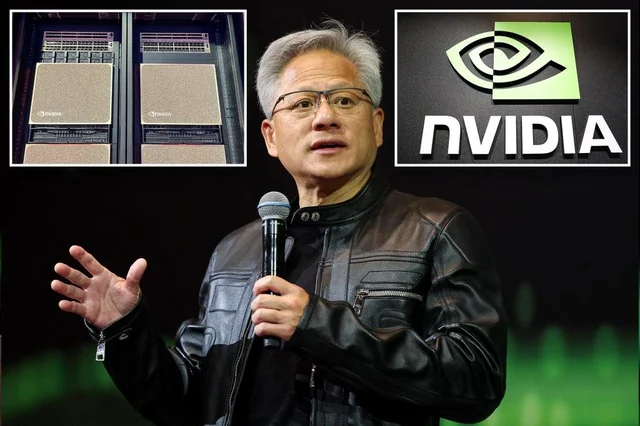
NVIDIA is gearing up to launch a new, more affordable Blackwell Artificial Intelligence (AI) chip for the Chinese market, aiming to keep its presence amid tightening U.S. export restrictions that have greatly impacted its business in China. The upcoming graphics processing unit (GPU), built on Nvidia’s latest Blackwell architecture and based on the RTX Pro 6000D design, is expected to be priced between $6,500 and $8,000, a notable drop from the $10,000 to $12,000 price tag of the now-banned H20 model.
What’s Different About the New Chip?
The lower price point reflects not just a strategic market move, but also a deliberate reduction in performance and manufacturing complexity. Unlike the H20, the new chip will use standard GDDR7 memory instead of high-bandwidth memory and will not require the advanced Chip-on-Wafer-on-Substrate (CoWoS) packaging from TSMC. This makes the chip easier and cheaper to produce, but also means it will offer less computing power though it is designed to comply with the latest U.S. export rules, which now cap GPU memory bandwidth at 1.7-1.8 terabytes per second, just below the H20’s 4 terabytes per second.
Strategic Importance and Market Impact
China remains a crucial market for Nvidia, accounting for around 13% of its sales in the last financial year. However, the company’s market share in China has dropped from 95% before the 2022 export curbs to about 50% today, largely due to these regulatory hurdles and the rise of local competitors like Huawei, whose Ascend 910B chip is rapidly gaining traction.
Nvidia’s move to develop this new chip is its third major attempt to tailor AI hardware for China in response to evolving U.S. restrictions. The company is also reportedly working on another Blackwell-based chip for China, with production possibly starting as early as September. Despite these efforts, Nvidia faces increasing competition from domestic Chinese firms, and experts predict that companies like Huawei could match the performance of these downgraded chips within one to two years.
Broader Context and Future Outlook
The U.S. export restrictions have forced Nvidia to write off $5.5 billion in inventory and walk away from an estimated $15 billion in sales after the H20 ban. These losses underscore the high stakes of the ongoing U.S.-China tech rivalry, which is pushing China to accelerate its own semiconductor development and self-sufficiency.
Despite the challenges, Nvidia’s ecosystem including its CUDA programming platform, which is widely used by AI developers remains a key advantage. Many engineers and companies are reluctant to switch away from Nvidia due to the depth and maturity of its software stack, even as hardware alternatives emerge.
Summary
- NVIDIA is partnering with Chinese partners like Inspur to better tailor its products and navigate regulatory complexities.
- The company’s strategy includes not only hardware adaptation but also local partnerships and joint ventures to maintain relevance in the Chinese AI market.
- Analysts believe that, while Nvidia’s new chips may be less powerful, they are likely to remain attractive for many Chinese customers due to the company’s established ecosystem and support.
Nvidia’s new budget-friendly Blackwell AI chip for China is a calculated response to export restrictions, balancing regulatory compliance with the need to remain competitive in a rapidly evolving and strategically vital market.
Other articles you may find interesting





